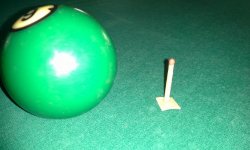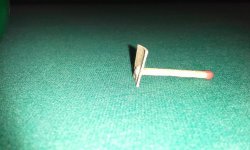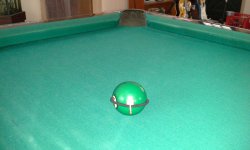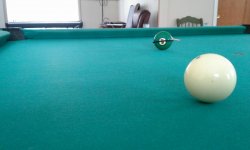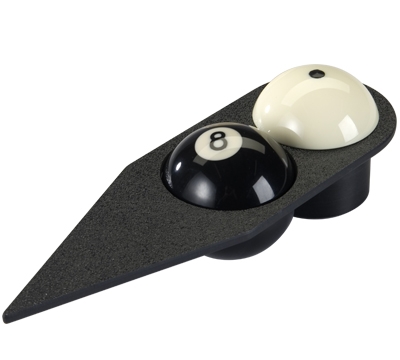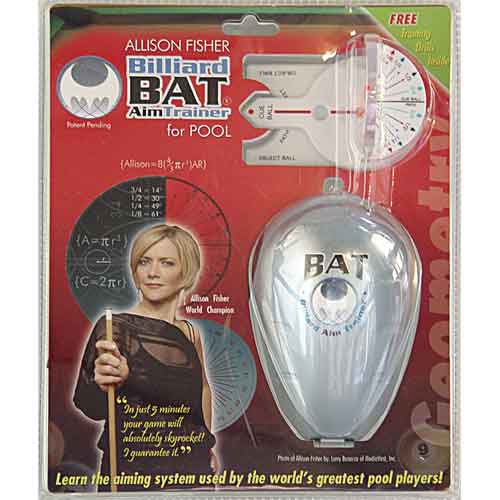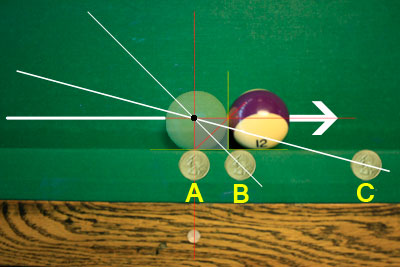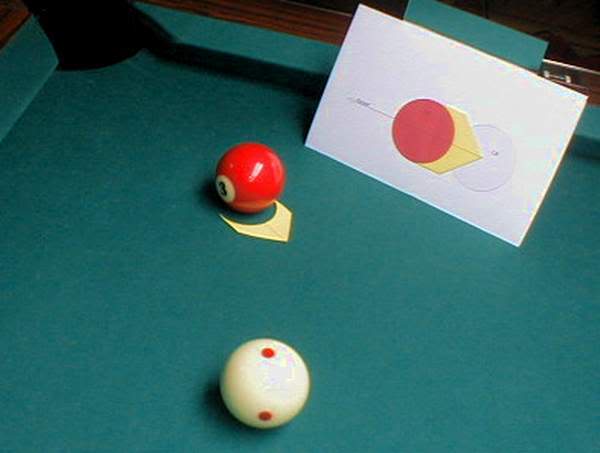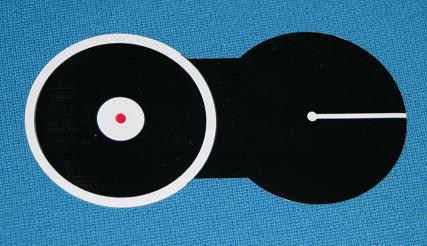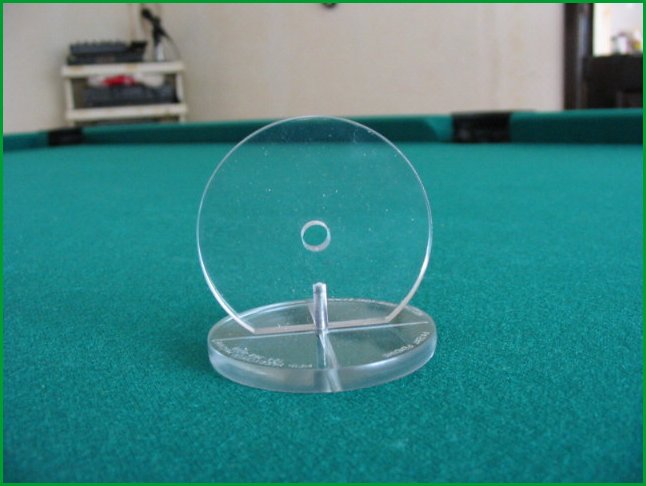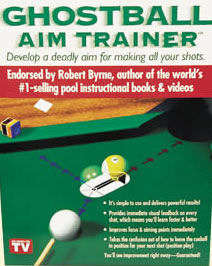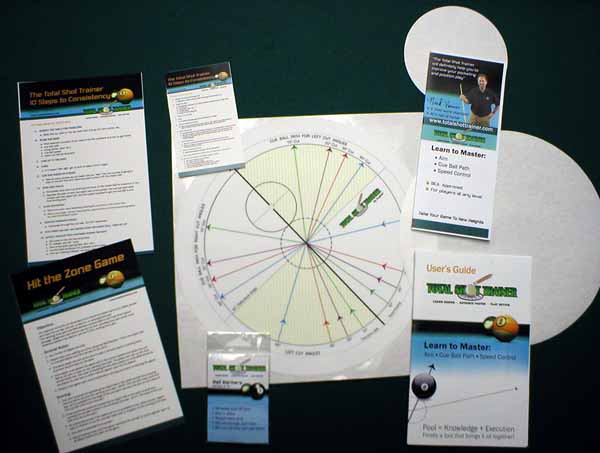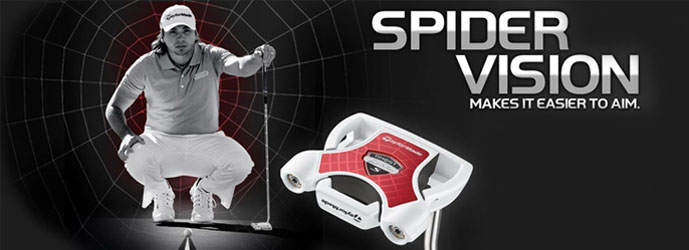When I was learning baseball way back when, someone would throw a ball I'd swing at it and may or may not hit it. I had no muscle nor visual memory to draw from on what it's like to hit a baseball.
Now days, the ball is placed on post, ie not moving and the kids swings at it. This builds good muscle and visual feedback on what is like to hit a ball. Next, the ball is thrown, but there is a database from hitting a non moving ball, so now, the only new part is the ball moving.
in other words, young players use a training device in order to improve their game.
A DVD is not a training device, lessons are not a training device. So is there a training device you can use that will give you a real world point to put the CB? Yes, there are several.
My choice is Babe Cranfields Arrow. The point of the arrow is where the ghost ball contact patch needs to be to make the OB go where you want. The contact patch is the area of of the ball that contacts the table. It's a term used in racing in regards to tires.
The contact point and contact patch are on the same line to where the OB is going. If you can "see" a contact point on a ball, there is no reason you can not "see" the contact patch. It's all visualization because there are no aiming points used like in aiming a rifle that has iron sights. If you think there is, you better look closely at the balls and when you find one that has a contact point on it, take a pic to shows everyone.
If you can "see" overlapping disc, you can "see" the ghost ball contact patch.
If you can "see" lines going between balls, you "see" the ghost ball contact patch.
I share all this and all for free, so I can say 100% that my motivation to do so is to help players and nothing more.
So, when the system fails you, and it will as evidence by some that did not have a positive experience with xxxx system, trying training with the arrow.
Now days, the ball is placed on post, ie not moving and the kids swings at it. This builds good muscle and visual feedback on what is like to hit a ball. Next, the ball is thrown, but there is a database from hitting a non moving ball, so now, the only new part is the ball moving.
in other words, young players use a training device in order to improve their game.
A DVD is not a training device, lessons are not a training device. So is there a training device you can use that will give you a real world point to put the CB? Yes, there are several.
My choice is Babe Cranfields Arrow. The point of the arrow is where the ghost ball contact patch needs to be to make the OB go where you want. The contact patch is the area of of the ball that contacts the table. It's a term used in racing in regards to tires.
The contact point and contact patch are on the same line to where the OB is going. If you can "see" a contact point on a ball, there is no reason you can not "see" the contact patch. It's all visualization because there are no aiming points used like in aiming a rifle that has iron sights. If you think there is, you better look closely at the balls and when you find one that has a contact point on it, take a pic to shows everyone.
If you can "see" overlapping disc, you can "see" the ghost ball contact patch.
If you can "see" lines going between balls, you "see" the ghost ball contact patch.
I share all this and all for free, so I can say 100% that my motivation to do so is to help players and nothing more.
So, when the system fails you, and it will as evidence by some that did not have a positive experience with xxxx system, trying training with the arrow.
